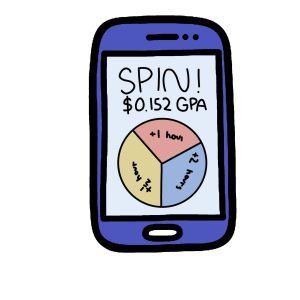School buses should be free for students
February 27, 2020
It’s another early morning and you have to catch the bus to head to school, but without a school bus pass, the journey possesses its own set of challenges beyond arriving on time. Being the only one home, you resort to the nearest public bus stop. Finally arriving at school, thankful to have made it only to realize you still have a long trek between you and your first class with little time to get there. Consequently, you arrive late.
For many Bonita Vista High (BVH) students and those throughout the Sweetwater Union High School District (SUHSD) who cannot afford the $400 price of a school-issued bus pass, that hypothetical is a reality. For instance, according to a poll conducted on Feb. 11 by The Crusader, where 459 students were polled, 88 students indicated they regularly ride the bus. Of those 88, 14.8 percent who ride the school-issued buses have had negative impacts on their families from the price of the bus passes. Although this number is quite low, BVH is only one of the many schools in the SUHSD that faces these high prices for bus passes. To avoid this issue of rising costs and the negative impact on low-income families, the SUHSD must make their prices cheaper or possibly free.
According to the SUHSD, by purchasing these two way yearly pass, students are only paying $2.42 a day for the bus. However, there are no payment plans available for students who cannot make the entire purchase at the beginning of the school year. Rather, SUHSD recommends for students in that case to use quarterly passes which ultimately amount to the same $400 price with little payment relief.
The only way a student can have access to a free bus pass is if the student lives alone and makes $16,237 annually or a family of eight that has an income of $56,459. Even then, students who barely miss the requirements must pay the full price, which their family or themselves are still not able to afford.
Many resort to the alternative of taking public transit systems, which have payment options that tailor to low-income families. This is despite the fact that public transit systems are typically farther from the school and have arrival times that may prevent the student from arriving to school on time. This means of transportation is often quite dangerous as well, with most people riding them being adults. Depending on where the students’ home is located, the distance they must travel varies and may even be up to a few hours, forcing them to wake up much earlier than other students to arrive at school.
According to the SUHSD, transportation is a non-mandated program in California. Thus, it comprises the varying yearly budget and often pushes cuts and a rise of expenses in the passes. Also within the budget, there are several other factors in need of money such as replacing books, hiring more teachers and maintaining classes, which may cause an overall rise in bus prices throughout the years.
Rising costs of bus passes creates the possibility of reduced attendance at schools in the district and consequently brings students to resort to public transportation, walk or are taken by a family member. This low attendance would cause many students to miss out on important classes and ultimately would not be given an equal opportunity to education as those who are easily transported. The low attendance would also be a burden upon the district considering they are given funds for the amount of students attending each school day and the time they are there for.
The San Francisco KALW Radio noted that when a transit system in Alameda County, California ran a pilot of allowing select students to ride their buses for free in 2002, their “after school participation increased,” although, they did not see a drastic difference in attendance, as that takes several years to change.
If we take into account the pilot taken by Alameda County and reflect on the current situation regarding SUHSD bus transportation, an ailment can be found to aid the busing crisis. However, a more permanent cure is required, to allow all students to ride the school-issued buses for free. This would give all students the ability to get to school with ease, increase the amount of attendance and most importantly give all students an equal education.







